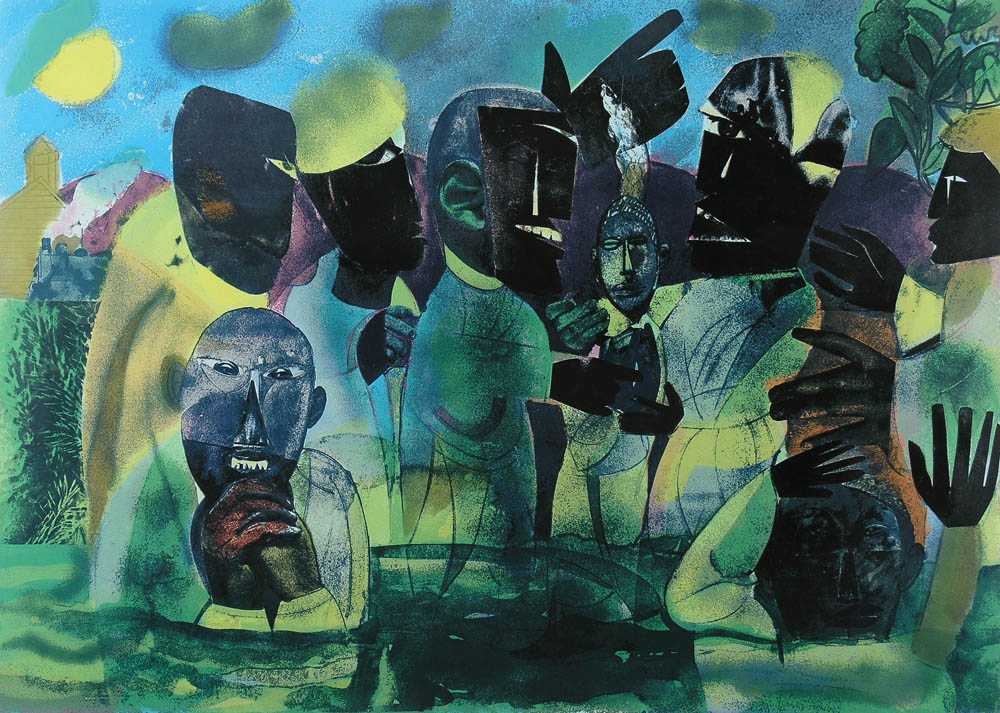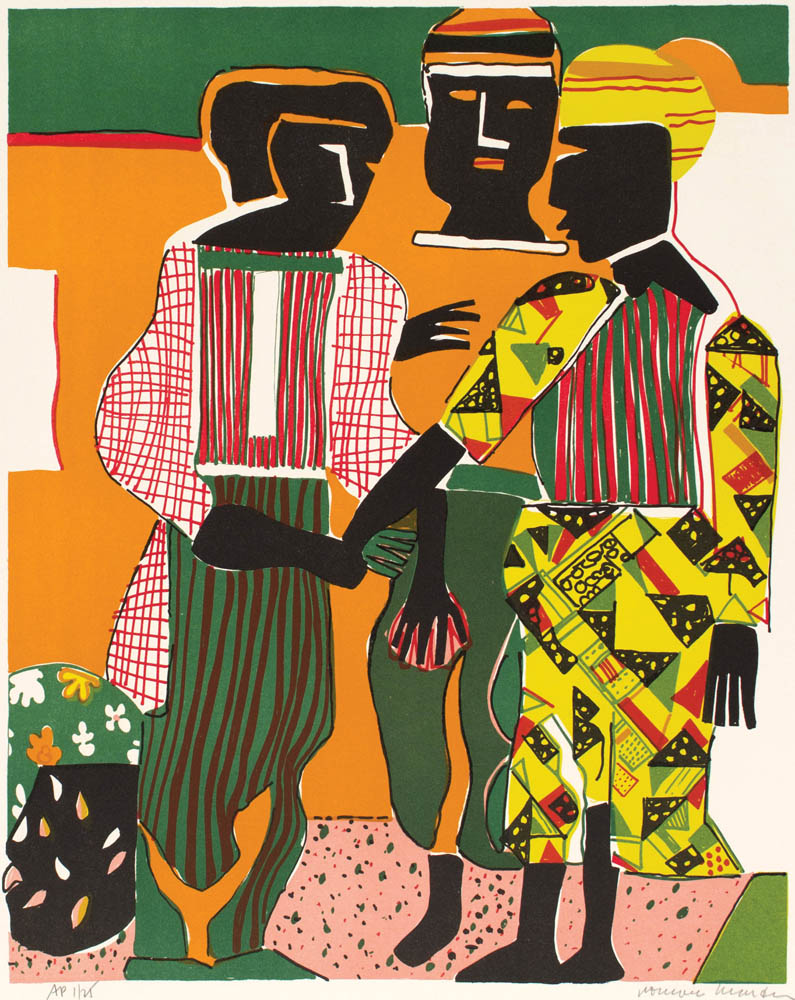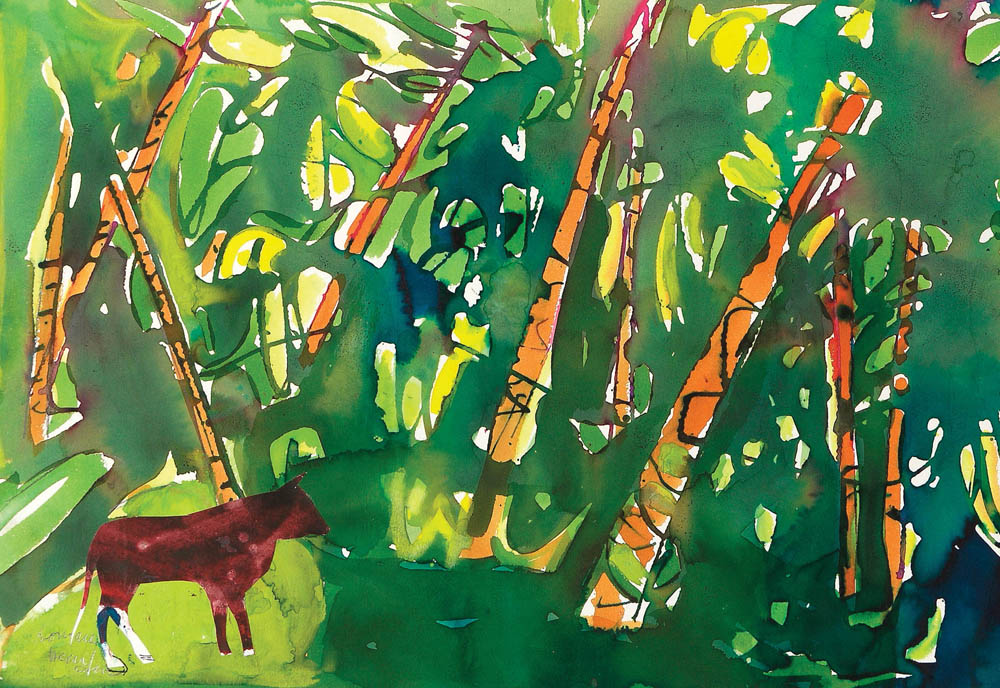
“I called him by his nickname, Romy, and thought of him almost like another grandfather,” confides gallerist and former Mint Museum curator Jerald Melberg, who helped organize Romare Bearden: Ways of Working, an exhibit that runs at Asheville Art Museum through January 22, 2024.
The show showcases works on paper by the late Romare Bearden (1911-1988), a groundbreaking, phenomenally prolific artist who was born in Charlotte, NC, where the Jerald Melberg Gallery is located, and educated at Boston University and New York University. Bearden was a scholastic giant who studied art, education, mathematics, and science, and supported himself by cartooning.

Melberg was a dear friend of Bearden — who also counted luminaries such as James Baldwin, Duke Ellington, Langston Hughes, and Joan Miró as close associates and friends. “I was so fortunate to know him, and it was such an honor to represent his art during the last 15 years of his life,” says Melberg. “There really aren’t words to describe his remarkable brilliance and stature.”
Nor enough space to list all his accomplishments. Bearden played both football and baseball in college, and was particularly proud of a pitching award from BU. Next he played for the Boston Tigers, a semi-professional all-Black baseball team. His artistic acclaim began with his first solo exhibition in Harlem in 1940, but in 1942, during World War II, Bearden joined the U.S. Army and served in Europe until 1945.
In the ensuing decades, he became recognized as one of the most original visual artists of the 20th century, best known for collage, although his talent spans almost too many genres to list. In 1987, President Reagan awarded him the National Medal of Arts, the most prestigious award given in the United States.

The artist, who worked on and off as a social worker from the 1930s through the ’60s, was also a celebrated humanitarian. His genius encompassed literature, music, and performing arts — and a lifelong devotion to mentoring young people in those disciplines, and to supporting emerging artists.
“Later in his career, Romy started doing prints as a way to get his work out to people at a more accessible price,” says Melberg, “and he collaborated with the greatest printmakers in New York. … I decided to call this show Ways of Working because he was always experimenting and finding new and different ways to create his art.”
The Asheville exhibition includes screenprinting, lithography, hand-colored etching, collagraph, monotype, relief print, photomontage, and collage. “Romy said, ‘I’m trying to explore those things I know best that are common to all cultures, and give the African American experience in art a universal dimension.’ He portrayed Black people’s everyday lives with joy, optimism, and always a sense of affirmation. He also often said that he never really left Charlotte; it was always in his heart and mind.”
Indeed, recollections of his early life there feature prominently in Bearden’s portfolio. He told Melberg that as an artist his memories were very important, because none of work was created from actual scenes, but from his imagination. Ten years ago, Romare Bearden Park was sited in the heart of lively uptown Charlotte.
“He wanted to give voice to all members of human existence, and with his art there was always a sense of the artist as a poet,” says Melberg. He remembers Bearden as “noble, generous, kind, gentle, and enormously gifted,” adding that “his massive contributions will inform the totality of art for a long, long time. In that sense, he continues to live.”
Romare Bearden: Ways of Working is curated by Jerald Melberg Gallery at Asheville Art Museum’s Van Winkle Law Firm Gallery (2 Pack Square, downtown) and runs through Monday, Jan. 22, 2024. For more information, see ashevilleart.org/exhibitions/romare-bearden
